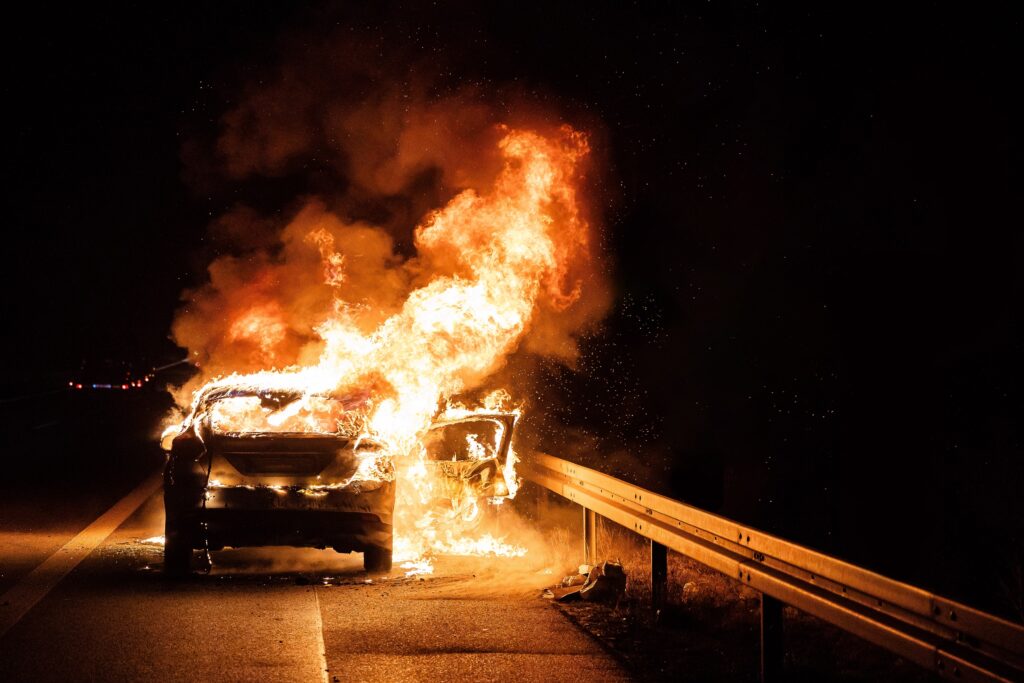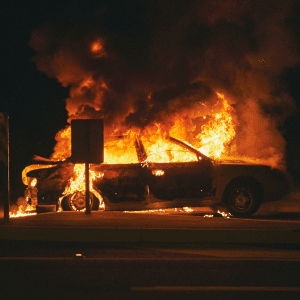
There were an estimated 212,500 vehicle fires in the United States in 2018, according to the National Fire Protection Association. Mechanical malfunctions or failures were the leading factors in every type of vehicle fire, followed by electrical malfunctions or failures.
One particular type of vehicle fire is known as a post collision fuel-fed fire (PCFFF). PCFFFs are the leading cause of car deaths, according to the U.S. Fire Administration.
Most PCFFFs and the injuries resulting from them are caused by manufacturing defects such as improperly placed fuel tanks or issues with transmission fluid. California law allows those who are injured by defective products to recover financial compensation from the manufacturers of those products.
Burn injuries can be extremely painful and debilitating, sometimes requiring extensive treatment and sometimes causing permanent scarring or disfigurement. Nadrich Accident Injury Lawyers can help you obtain a financial recovery from the manufacturer of a defective vehicle if you’ve been injured in a vehicle fire.
Vehicle Defects
There are many types of vehicle defects which can lead to a car fire and burn injuries. These defects include:
- A lack of fuel filler neck check valves
- Leaky fuel lines
- Overheating catalytic converters
- Oil circulation system failures
- A lack of anti-siphoning valves
- Turbo-charger defects
- Defective anti-siphoning valves
- Defective fuel line materials
- Badly designed car batteries
- Improperly installed batteries
- Improperly installed starters
- Improperly installed electronics
- Badly insulated electrical lines
- Loose electrical connections
- Malfunctioning cruise control
- Fuel tanks placed within the crush zone of a vehicle
- Failure of the electric system
- Internal engine lubrication system damage
- A failure to protect fuel lines
- Not enough airflow and cooling for exhaust
- The misrouting of fuel lines
- Short circuits
- Inadequately shielded fuel tanks
Siphoning is the flow of gasoline. It can be caused by gravity or pressure. The auto industry has known since at least the early 1970s that siphoning was an issue in auto collisions, and has since discussed several solutions in documents, including check valves at the gas tank, shutoff valves inside the gas tank, a vent hole in the fuel line at the gas tank, numerous shutoff connectors, and more. Auto manufacturers have known about these safety features for decades and the cost to implement these safety devices is very low, yet auto makers sometimes still fail to implement these life-saving safety measures.
One weak point in many cars is the fuel filler pipe. Automakers have known since the 1960s that it’s common for fuel to spill from the fuel-filler pipe in crashes. The U.S. Department of Transportation and the National Highway Safety Bureau determined in 1967 that check valves in this pipe would solve the spillage issue.
Devices of this type can be found described in patents from the 1930s. Yet, automaker still consistently fail to make sure that vehicles are equipped with these critical safety devices.
Burn Degrees

Vehicle fires can lead to burn injuries. There are four degrees of burns:
First degree: First degree burns affect only the outer layer of the skin. The skin might be painful and red but will lack blisters. These burns almost never cause long-term damage.
Second degree: Second degree burns damage the outer layer of the skin and the dermis, which is the layer of skin underneath the outer layer. These burns cause the skin to be swollen, bright red, and sometimes wet and shiny looking. These burns cause blisters, and the burns are painful to the touch.
Second degree burns can be superficial, in which case they won’t scar, or deep partial thickness burns, which can scar or permanently discolor your skin.
Third degree: These burns are sometimes referred to as full thickness burns and destroy two layers of your skin. They might look yellow, white, brown or black, and won’t hurt because they damage or destroy nerve endings.
Fourth degree: These burns can be life-threatening and are the deepest and most severe burns. All layers of the skin, as well as tendons, muscles and bones, are destroyed by these burns.
Burn injuries can lead to scarring or disfigurement, and Nadrich Accident Injury Lawyers can help burn victims recover financial compensation for this scarring or disfigurement.
Vehicle Fire Recoveries
Victims of vehicle fires can pursue many types of damages in defective fuel system lawsuits, including:
- Pain and suffering
- Burn center and hospitalization center admission
- The costs of medical treatment
- Disfigurement and disability
- Assisted living and long-term care arrangements
- Reduced earning capacity
- Past and future lost wages
Can I File A Vehicle Fire Lawsuit?
You may be entitled to financial compensation if you were injured in a vehicle fire that you believe was at least partially due to someone else’s negligence.
Negligence is failing to behave as a reasonably careful person would in the same situation. Reasonably careful auto manufacturers would make sure their automobiles don’t have defects which could lead to fuel igniting and burning the people inside their automobiles.
California law allows those injured by negligence to obtain financial compensation for their injuries from the negligent parties who injured them.
The experienced California vehicle fire lawyers at Nadrich Accident Injury Lawyers can obtain a financial recovery for you if you’ve been burned in a vehicle fire. We don’t charge a fee unless and until we obtain a recovery; no win, no fee.
Call us today at 800-718-4658 if you or a loved one was burned in a vehicle fire. You may be entitled to financial compensation.

